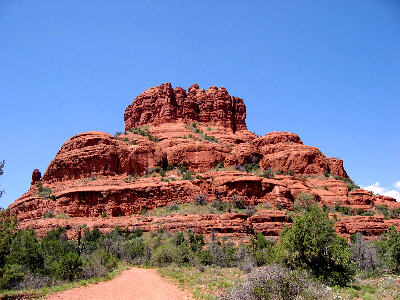Mud is beautiful.
Yes, embrace mud. It is a beautiful color. When you use it where it needs to be, it can make the painting take off!
Don’t believe me? You haven’t been to Arizona then and seen the soil and mountains there.
The rich red of their soil and rock is breathtaking. Get that soil wet and it’s mud right?
It is the color of a rich red, like an indian red or a really warm burnt siena.
This is a wonderful color, if you use it in the right place and If it is used to help your painting.
If you are painting a tomato in certain lighting, this “mud” just may be the color you need to paint the darker parts of the tomato.
In fact, you don’t even refer to it as mud, it is the color that you see, so it is the color you need,the color you must mix.
If it is the right color, the color you need…how can this be mud? How can this be a bad thing?
If you put this same color in an inappropriate spot in your painting, say on a painting of a banana or on the part of a painting that has nice blue water…Then you will indeed have mud!
You must learn what “mud” really means to the painter.
“Mud” is color that is dead, dull, no luminosity, and most important, in the wrong place on your painting.
This is the “mud” you should be concerned about. The “painters” mud.
Real mud is a beautiful tone.
How can it not be when so many of our paints are made from earth. Yellow ochre, Burnt umber, Burnt Siena to name but a few.
In the color mixing manual contained in the The Insider Guide to the Secrets of Oil Painting you get an exact formula, a thinking process, a step-by-step procedure to mix any color that you need and see.
Let me give you an example of how a beginning painter who has not received proper instruction mixes mud.
Let’s say they are painting the tomato I talked about earlier. They think a tomato is a dark orange color..almost red.
So to start mixing the color of the tomato, they take an orange tube of paint, add some red to it. But, they are working on the part of the tomato that is in shadow. So, they put some of this mixture down on the canvas and decide it’s too light.
They have never been taught how to properly lighten and darken colors so they just guess.
They dip into a little black and add that in…it didn’t really work…made the color look a little dirty.
Then they add some ultramarine blue because they heard that blue and orange are opposites on the color wheel so that must be the thing to do…
They have dipped into blue with a brush that has black on it, that originally had orange and red on it…
So, they have mixed 4 colors together. These colors don’t really have much relationship to each other and all of a sudden, the beginning painter has on their palette a clump of a dead color, that is NOT the color that he or she needs to paint the shadow areas of that tomato. MUD.
The frustration sets in and they stop painting for awhile.
Don’t let that happen to you. Learn to stay away from “painters mud” and know when to use the color of real mud.

